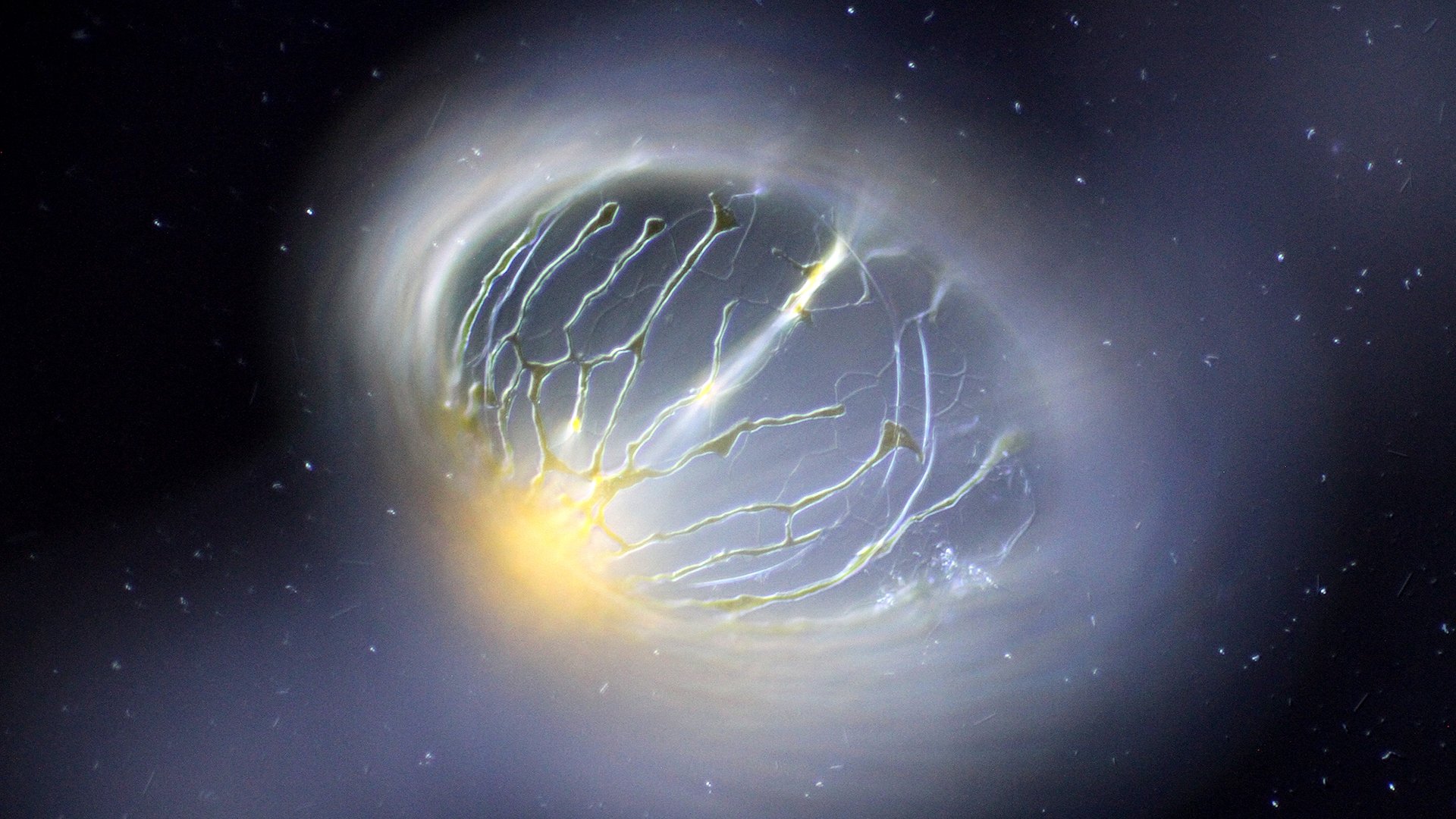Pyrocystis noctiluca is a marine plankton with the ability to produce bioluminescence. This is a blue light produced instantaneously in response to water movement usually around ships and breaking waves. Pyrocystis uses the bioluminescence as protection against predators by starling them with a flash of light or highlighting the movement of predators so that they are vulnerable to secondary predators.
Pyrocystis noctiluca is a marine plankton with the ability to produce bioluminescence. This is a blue light produced instantaneously in response to water movement usually around ships and breaking waves. Pyrocystis uses the bioluminescence as protection against predators by starling them with a flash of light or highlighting the movement of predators so that they are vulnerable to secondary predators.
Luciferine and luciferase
Pyrocystis noctiluca is a unicellular, eukaryotic dinoflagellate. The spherical cell is 250–400 µm (0,25-0,4mm) in size. The bioluminescence takes place in specialised organelles called scintillons. By combining the protein luciferine and the enzyme luciferase light is produced. The intensity of the bioluminescence depends on the day and night rhythm of the algae. In comparison with the night, Pyrocystis produces little light during the daytime. If this algae is kept under constant lighted conditions, it will stop producing light altogether.
Light flashes
Pyrocystis noctiluca lives at a dark depth of 60-100m. When this dinoflagellate is attacked by a crustacean, it produces 23-62 light flashes per second. This dazzling flash of light has two advantages. First of all, it scares off the predator and confuses it. In addition, it attracts its predator’s predators. Pyrocystis often lives in high densities. In the event of an attack they all light up at the same time, illuminating the entire area. This makes it easier for larger predators to hunt for the crustaceans. Research found that both fish and cuttlefish (Sepiida) are more successful hunting for crustaceans in the presence of the luminous Pyrocystis algae.

